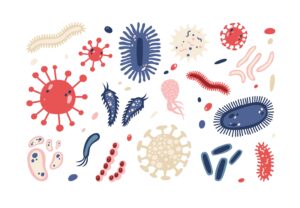Do you produce ready-to-eat (RTE) meat products? Do they have any additives? If so, this article is for you. … If not, keep reading for some nuggets of wisdom to help keep any food business in regulatory compliance.
In February 2021, CFIA announced its finding that some RTE meat products contained ingredient preparations made of vinegar buffered by food additives that were not declared on the label. While noting that permitted food additives can be used in foods, CFIA reminded producers that all must be declared as either an ingredient or a component of the food.
Originally the RTE meat producers had had only until November 2022 to comply with the directive, but in early 2022, CFIA pushed back the date, extending the transition period so the industry has until November 8, 2023, to comply – which is now less than two months away. As such, RTE meat manufacturers should be double-checking your product labels to ensure all food additives are declared, and that labels meet all other regulatory requirements.
While this directive applies specifically to RTE meat additives such as sodium bicarbonate, potassium hydroxide and sodium hydroxide, CFIA’s early September reminder of the upcoming November 8 deadline also included a reminder that everyone in the food industry is responsible for ensuring that labeling and advertising information be accurate, not false or misleading, and not create an erroneous impression.
Another nugget of which the entire industry should be aware is CFIA’s statement in the reminding that it “will monitor compliance with all federal regulatory requirements for labelling and advertising and will conduct follow-up inspections to ensure the necessary changes have been made.” Again, while CFIA may be focusing on RTE meats, you can be assured that the statement is applicable to the entire industry.
In fact, this is made clear with CFIA’s reference to the Industry Labelling Tool, which “is the food labelling reference for all food inspectors and stakeholders in Canada.” With information on food products that require a label, general principles for labelling and advertising, a requirements checklist, and FAQs, the Labelling Tool also includes images and tables relevant to core labelling requirements, claims and statements, and food-specific labelling requirements – covering everything from alcohol to meats to salt.
Labelling is a critical aspect of a food producer’s food safety program and is essential to consumer understanding of the food and its nutritional values and ingredients, including those which to a specific consumer may be averse or otherwise want to avoid. So, with CFIA’s reminder to RTE meat producers that the compliance date is approaching, other food producers should see a nudge to review their own labels and ensure they are complete and accurate, including additives and components thereof.
Stay up to date on CFIA notifications on TAG’s new Canadian Food Regulations Regulatory Updates webpage.





